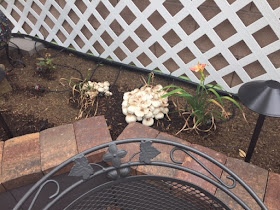Q. I have a Goldenrain
tree in a pot I got several years ago.
It’s about 10 feet high with a diameter of about 1.5 inches. What are
the pros and cons of planting it in a desert landscape here in Las Vegas? What
planting recommendations would you give?
A. I think it’s a good,
nondesert tree. It is better suited growing further north than us but it
handles dry arid environments very well. It is considered “drought tolerant” in
Midwestern or California landscapes but it is not a desert tree. I would put it
on an irrigation valve with other non-desert trees like most ash and pine
trees.
Because this tree has been left in its container for a
few years, the roots will most likely be “rootbound”. There is not much you can
do to correct this problem if it’s there. This tree may never fully establish
in the landscape because of the circling roots inside the container.
I have never seen it grown with rock mulch covering the soil
surface but I don’t think it would be a good soil environment for it in years
to come. It would, like most ash trees, grow better in soils covered in
woodchip mulch.
Even though it can handle a southern landscape exposure
if it isn’t intensely hot, I would plant it on the east or north side of the
home if possible. If that’s not possible, then surround it with other plants to
keep it a bit cooler and the roots moist and give the roots somewhere to grow.
The trunk sunburns easily so leave lower limbs on the tree until it gets older.
Because this is the Mojave Desert, plant this tree in
soil mixed with compost. The soil should be dug three times wider than the
container and the excavated soil should be mixed with compost when it is
replanted. Be sure to run water from the hose as you are planting this tree to
remove air pockets. Stake this tree upright for one growing season before they
are removed.













